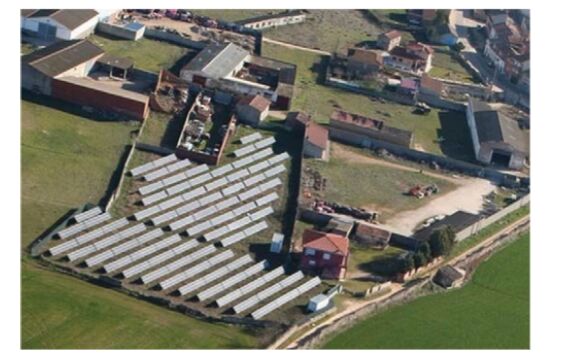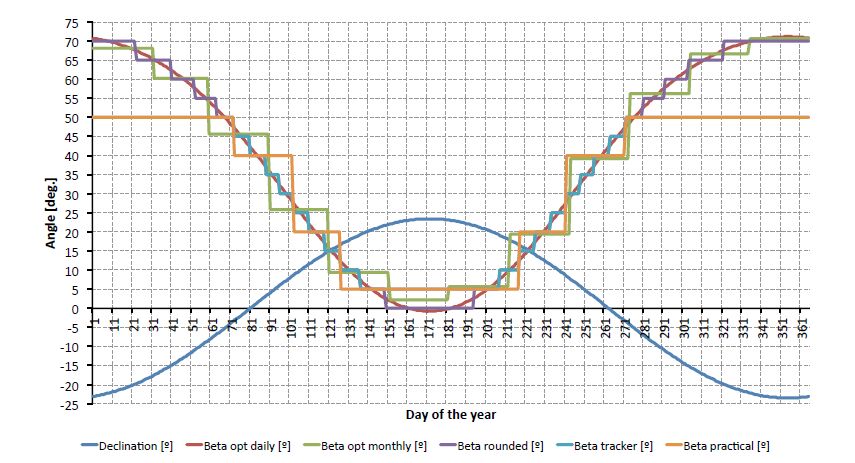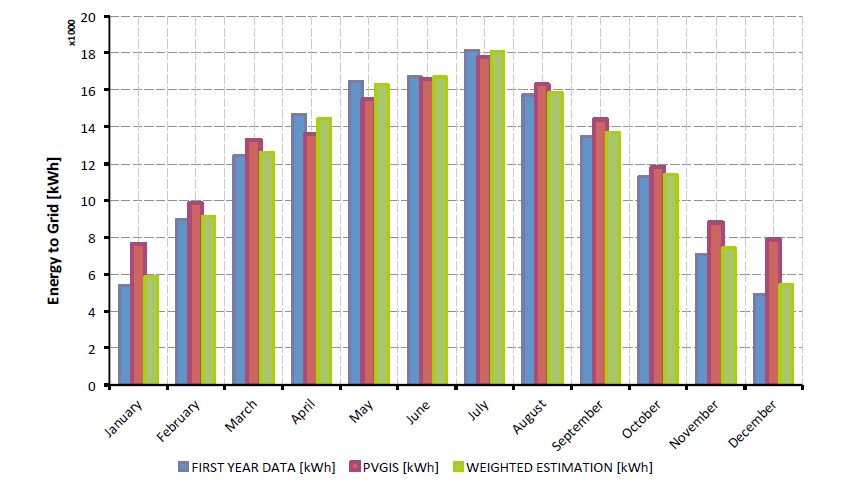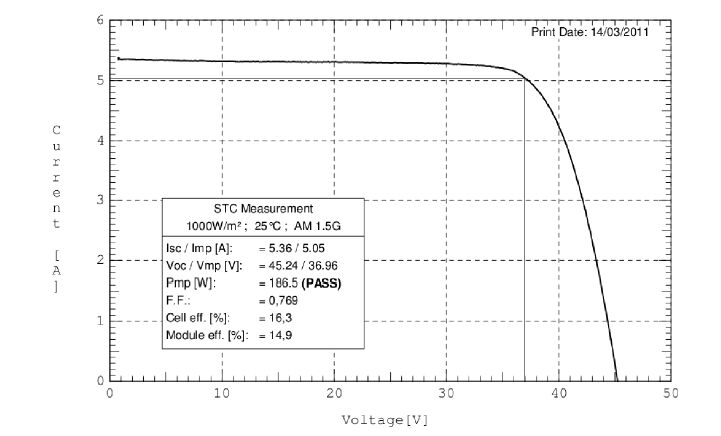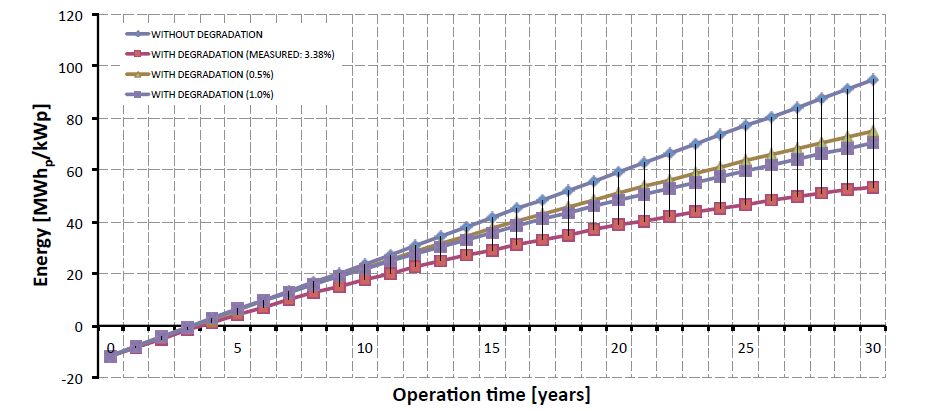Abbreviations
| AC |
fasting blood glucose |
| BMI |
body mass index |
| BUN |
blood urea nitrogen |
| Con A |
concanavalin A |
| CRE |
creatinine |
| HDL-C |
high density lipoprotein-cholesterol |
| MS |
metabolic syndrome |
| PBMCs |
peripheral blood mononuclear cells |
| RELMs |
resistin-like molecules |
| RETN |
human resistin gene |
| SNPs |
single nucleotide polymorphisms |
| SP |
systolic pressure |
| T2DM |
type 2 diabetes mellitus |
| TG |
triglyceride |
1. Introduction
The etiology of type 2 diabetes mellitus (T2DM), which affects at least 200 million throughout the world, is not entirely disclosed. Though insulin resistance seems to be a central abnormality, the origin of the impaired insulin action and how it explains the many other clinical symptoms and complications of T2DM still await to be investigated. Obesity, primarily characterized by an increased mass of fat, is a major risk factor which leads to the development of hyperlipidaemia, metabolic syndrome (MS), and T2DM. The adipose tissue is traditionally considered to play a passive role in metabolism by acting as a fat storage reservoir. In addition to being the main energy storage organ, adipocytes are involved actively in maintaining metabolic balance [1,2] by secreting several hormones and cytokines [3]. These adipose derived signaling molecules exert potent metabolic effects to distant organs, which are likely to play a key role in the complex inter-organ communication network to modulate metabolism and energy homeostasis [4,5].
Resistin is a 12.5 kDa cysteine-rich peptide that is secreted from adipocytes in rodents and from macrophages in human [6]. Resistin is a member of the resistin-like molecules (RELMs) with a conserved pattern of 11 cysteine residues at its C-terminus [7]. The postulated roles for resistin include the regulation of glucose homeostasis, adipose tissue mass and inflammation. In murine models, resistin is induced during adipocyte differentiation and its expression is reduced upon treatment with insulin sensitizers. Serum resistin levels are elevated in obese mice, and administration of resistin impairs glucose tolerance in normal mice. Several human studies report serum resistin levels are increased in patients with obesity, insulin resistance, and/or T2DM [8,9,10]. Inflammation is a hyper-resistinemic state in humans, and cytokine induction of resistin may contribute to insulin resistance, obesity, and other inflammatory states [11,12,13].However, the mechanism and importance of increased resistin levels in human MS and T2DM are still not fully illustrated.
The human resistin gene (RETN) is located on chromosome 19p13.3, with several identified single-nucleotide polymorphisms (SNPs) associated with T2DM [14,15]. Two RETN 5'-flanking SNPs are associated with obesity among non-diabetic individuals [16,17]. The RETN
-420C>G variants draw much attention and are most extensively investigated. This SNP is the major determinant of the resistin expression and associated with insulin resistance, and possibly with cellular oxidative stress [18]. Mattevi et al. reported that RETN -420C>G is associated with higher mRNA expression in human abdominal subcutaneous fat [19]. Nevertheless, epidemiological studies on the association between the RETN -420C>G SNPs and T2DM risk are conflicting and controversial. Most of the resistin-related studies focus on the investigation of the SNPs in Caucasian or Japanese subjects, relatively few corresponding data in Chinese/Taiwanese populations are reported. Therefore, it is tempting for us to investigate whether RETN SNPs are linked to T2DM in Taiwanese population for determining the ethnic-dependent variations for T2DM development.
2. Materials and Methods
2.1. Study subjects
Fasting venous blood samples were taken from 244 T2DM patients attending the diabetic clinic in Department of Internal Medicine, Chung Shan Medical University Hospital. Fasting blood samples from 305 non-diabetic control subjects were collected from Physical Check Up Unit. Written informed consent was obtained from all the study subjects after the nature of the procedure was explained. The information of body height, weight, age, fasting blood sugar, renal function index (creatinine [CRE] and blood urea nitrogen [BUN]), etc., was collected and filed for further statistical analysis. The study protocol was approved by the Institutional Review Board of Chung Shan Medical University Hospital.
2.2. Isolation of peripheral blood mononuclear cells (PBMCs)
Peripheral blood was obtained from normal healthy donors, who were receiving no medications nor had any previous history of metabolic disorders, and type 2 diabetic subjects as well. The blood was collected from the antecubital vein in tubes containing EDTA. Samples were immediately processed after blood withdrawal. PBMCs were isolated from buffy coats by layering blood samples onto Ficoll-Paque (Pharmacia Biotech) gradient method in 50 mL conical centrifuge tubes as described [20,21].After centrifugation at 400 × g for 30 min at room temperature, the PBMCs were transferred to a new conical centrifuge tube where the cells were washed twice with phosphate buffered saline.
2.3. Analysis of resistin secretion
PBMCs were isolated from whole blood using Ficoll-Paque (Pharmacia Biotech) gradient centrifugation method. After isolation, 2 × 106 PBMCs were cultured in RPMI medium (Hyclone) containing 10% FBS (GIBCO). After 24 h of 10 μg/mL concanavalin A (Con A, Sigma) treatment, secreted resitin levels by the activated PBMCs were determined using ELISA kit (R & D).
2.4. Analysis of RETN promoter genotype
Genomic DNA was extracted from PBMCs using commercially available kit. The 5'-flanking region of the RETN gene was amplified by PCR reaction containing 100 ng of genomic DNA, 12.5 pmol of each primer (5'-TGTCATTCTCACCCAGAGACA-3' and 5'-TGGGCTCAGCTAACCAAATC-3'), 1 unit of Taq DNA polymerase and 125 μM dNTP in a total volume of 25 μL, using a PCR thermalcycler. DNA products after PCR amplification were digested using restriction enzyme Bpi I to detect the -420C>G polymorphism, followed by separation in 12% polyacrylamide gel.
2.5. Statistical analysis
Data analysis started with descriptive statistics, including mean and standard deviation for continuous variables, and frequency for categorical variables. If necessary, natural logarithm transformation was used to enhance normality for blood biochemistry parameters with skewed distribution. Student's t test was applied for comparisons of age, body mass index (BMI), and each of the blood biochemistry parameters between T2DM subjects and controls, and Chi-square test for comparing frequencies of different genotypes and sex between groups. Moreover, one-way analysis of variance was applied to compare means of respective blood biochemistry parameters among subjects with different RETN genotypes. Finally, multiple linear regression analysis was used to assess the associations between RETN genotypes and each of the biochemistry parameters, with adjustment for diabetes status, age, and sex. An alpha level of 0.05 was used for all statistical tests.
3. Results
Our study aimed at investigating the distribution of the RETN -420 SNPs among control and type 2 diabetic subjects to examine the possible correlation between RETN genetic polymorphisms and T2DM in Taiwanese population.
3.1. Characteristics of the study subjects (Table 1)
Table 1. Demographic and biochemical data of study subjects in this study.
| Item |
Normal range |
Study subjects |
P |
| Control (n = 244) |
T2DM (n = 305) |
| Male/female |
|
156/88 |
159/146 |
0.003 |
| Age (years) |
|
51.5 ± 13.3 |
57.6 ± 11.2 |
< 0.001 |
| BMI (kg/m2) |
|
25.5 ± 5.5 |
25.4 ± 5.5 |
0.078 |
| Fasting plasma glucose (AC) |
70–110 mg/dl |
105.2 ± 40.3 |
176.4 ± 70.4 |
< 0.001 |
| Blood urea nitrogen (BUN) |
7–21 mg/dl |
15.0 ± 4.8 |
17.2 ± 7.8 |
< 0.001 |
| Creatinine |
0.6–1.4 mg/dl |
1.1 ± 0.3 |
1.0 ± 0.5 |
0.066 |
| Systolic pressure (SP) |
120–140 mmHg |
123.7 ± 17.6 |
133.5 ± 18.6 |
< 0.001 |
| Diastolic pressure (DP) |
70–90 mmHg |
78.4 ± 9.6 |
79.2 ± 11.5 |
0.521 |
| Cholesterol (CHO) |
125–240 mg/dl |
193.0 ± 37.5 |
198.8 ± 46.8 |
0.055 |
| High density lipoprotein-cholesterol (HDL-C) |
> 35 mg/dl |
55.5 ± 38.2 |
47.8 ± 13.9 |
< 0.001 |
| Triglyceride (TG) |
20–200 mg/dl |
150.7 ± 129.6 |
183.6 ± 129.6 |
0.004 |
| *Student's t test.
†Data are presented as mean ± standard deviation. |
Data regarding biochemical parameters of recruited subjects, including the healthy control individuals and diabetic patients, were listed in Table 1. Among the biochemical parameters examined, significant differences were observed in fasting blood glucose (AC; 105.2 ± 40.3 v.s 176.4 ± 70.4 mg/dL, p < 0.001), BUN (15.0 ± 4.8 v.s 17.2 ± 7.8 mg/dL, p < 0.001), systolic pressure (SP, 123.7 ± 17.6 v.s 133.5 ± 18.6 mmHg, p < 0.001), high density lipoprotein-cholesterol (HDL-C; 55.5 ± 38.2 v.s 47.8 ± 13.9 mg/dL, p < 0.001) and triglyceride (TG; 150.7 ± 129.6 v.s 183.6 ± 129.6 mg/dL, p = 0.004) under fasting conditions between patients and controls.
3.2. Significant association of RETN -420 genotypes and T2DM (Table 2)
Table 2. Associations between RETN
-420 SNPs and clinical parameters of study subjects.
| Genotype/allele |
Resistin -420C>G SNPs |
P |
| Control (n = 244) |
T2DM (n = 305) |
| C/C |
70 (28.7%) |
124 (40.6%) |
0.01 |
| C/G |
127 (52.0%) |
139 (45.6%) |
|
| G/G |
47 (19.3%) |
42 (13.8%) |
|
| C |
267 (54.7%) |
387 (63.4%) |
0.002 |
| G |
221 (45.3%) |
223 (36.6%) |
|
Results regarding the distribution of the RETN
-420 SNPs in recruited subjects were summarized in Table 2. Among the 244 non-diabetic control individuals, 70 (28.7%), 127 (52.0%) and 47 (19.3%) subjects carried C/C, C/G and G/G genotype, respectively; while the corresponding number in T2DM patients was 124 (40.6%), 139 (45.6%) and 42 (13.8%). Significant difference in distribution of RETN -420C>G genotypes between T2DM and control subjects was observed (p = 0.01). In addition, the prevalence of RETN -420 C and G allele in control individuals was 54.7% and 45.3%, respectively; and that in T2DM counterpart was 63.4% and 36.6%. Significant difference in the distribution of RETN alleles between diabetic patients and control subjects was also observed (p = 0.002). The above observations demonstrate that the RETN -420 SNPs are associated with T2DM subjects in Taiwanese population.
In addition to the significant association between RETN
-420C>G genotypes with T2DM, we further investigated the correlation between the SNPs and biochemical parameters by stratifying the study subjects according to the criteria of whether their test results were within or beyond the normal range (Table 3). No significant association between the biochemical data and RETN
-420 SNPs was found.
Table 3. Associations between RETN
-420 SNPs and clinical parameters of study subjects.
| Item |
Range |
Control |
T2DM |
| n |
C/C n (%) |
C/G n (%) |
G/G n (%) |
P |
n |
C/C n (%) |
C/G n (%) |
G/G n (%) |
P |
| BMI |
≥25 |
97 |
34 (35.1%) |
49 (50.5%) |
14 (14.4%) |
0.073 |
74 |
28 (37.8%) |
38 (51.4%) |
8 (10.8%) |
0.280 |
|
< 25 |
124 |
29 (23.4%) |
65 (52.4%) |
30 (24.2%) |
|
54 |
23 (42.6%) |
21 (38.9%) |
10 (18.5%) |
|
| SP |
≥140 |
45 |
9 (20%) |
29 (64.4%) |
7 (15.6%) |
0.162 |
37 |
13 (35.1%) |
18 (48.7%) |
6 (16.2%) |
0.794 |
|
< 140 |
175 |
53 (30.3%) |
85 (48.6%) |
37 (21.1%) |
|
57 |
24 (42.1%) |
25 (43.9%) |
8 (14%) |
|
| DP |
≥90 |
33 |
8 (24.2%) |
18 (54.6%) |
7 (21.2%) |
0.862 |
25 |
10 (40%) |
13 (52%) |
2 (8%) |
0.501 |
|
< 90 |
187 |
54 (28.9%) |
96 (51.3%) |
37 (19.8%) |
|
69 |
27 (39.1%) |
30 (43.5%) |
12 (17.4%) |
|
| AC |
≥110 |
27 |
7 (26%) |
12 (44.4%) |
8 (29.6%) |
0.399 |
186 |
77 (41.4%) |
80 (43%) |
29 (15.6%) |
0.186 |
|
< 110 |
194 |
56 (28.8%) |
102 (52.6%) |
36 (18.6%) |
|
19 |
4 (21.1%) |
10 (52.6%) |
5 (26.3%) |
|
| BUN |
≥25 |
2 |
0 |
2 (100%) |
0 |
0.388 |
21 |
7 (33.3%) |
11 (52.4%) |
3 (14.3%) |
0.634 |
|
< 25 |
219 |
63 (28.8%) |
112 (51.1%) |
44 (20.1%) |
|
132 |
57 (43.2%) |
55 (41.7%) |
20 (15.1%) |
|
| CRE |
≥1.4 |
17 |
1 (5.9%) |
12 (70.6%) |
4 (23.5%) |
0.092 |
27 |
11 (40.8%) |
9 (33.3%) |
7 (25.9%) |
0.256 |
|
< 1.4 |
203 |
62 (30.5%) |
101 (49.8%) |
40 (19.7%) |
|
163 |
63 (38.7%) |
76 (46.6%) |
24 (14.7%) |
|
| CHO |
≥240 |
21 |
4 (19.1%) |
14 (66.7%) |
3 (14.2%) |
0.358 |
24 |
13 (54.2%) |
6 (25%) |
5 (20.8%) |
0.103 |
|
< 240 |
199 |
58 (29.1%) |
100 (50.3%) |
41 (20.6%) |
|
175 |
64 (36.6%) |
84 (48%) |
27 (15.4%) |
|
| HDL-C |
> 35 |
196 |
60 (30.6%) |
100 (51%) |
36 (18.4%) |
0.088 |
131 |
52 (39.7%) |
58 (44.3%) |
21 (16%) |
0.390 |
|
≤35 |
25 |
3 (12%) |
14 (56%) |
8 (32%) |
|
37 |
12 (32.4%) |
21 (56.8%) |
4 (10.8%) |
|
| TG |
≥200 |
51 |
14 (27.5%) |
24 (47.1%) |
13 (25.4%) |
0.521 |
59 |
26 (44.1%) |
24 (40.7%) |
9 (15.2%) |
0.557 |
|
< 200 |
169 |
48 (28.4%) |
90 (53.3%) |
31 (18.3%) |
|
139 |
50 (36%) |
66 (47.5%) |
23 (16.5%) |
|
3.3. RETN -420 genotypes and resistin levels (Table 4)
Table 4. Associations between RETN
-420 SNPs and resistin levels among study subjects.
| Genotype |
Control |
T2DM |
P |
| n (107) |
Resistin (ng/mL) |
n (58) |
Resistin (ng/mL) |
| C/C |
16 |
2.50 ± 0.44 |
22 |
3.95 ± 0.80 |
0.044 |
| C/G |
54 |
3.94 ± 0.53 |
24 |
4.31 ± 0.88 |
| G/G |
37 |
2.56 ± 0.43 |
12 |
4.88 ± 2.31 |
| Resistin levels secreted from the ConA-activated PBMCs from 107 control and 58 diabetic subjects were analyzed. |
To further investigate the association of resistin and T2DM, resistin levels produced by ConA-activated PBMCs from 107 control and 58 T2DM study subjects were determined. The results showed that while no significant difference between the resistin levels and RETN -420 genotypes was observed, the secretory resisitn levels by Con A-stimulated PBMCs from T2DM were significantly higher than that from control subjects.
4. Discussion
Most of the identified RETN SNPs are mapped to the non-coding region, with rs1862513 at position -420 attracts much attention and thus is most widely studied SNPs among different ethnic populations. In addition to the association between RETN -420 SNPs with insulin resistance [15], obesity [15,17,19] and T2DM [22,23], the RETN -420 G allele is associated with stronger promoter activity [22], higher abdominal fat resistin mRNA levels and plasma resistin concentrations [6,14]. This G allele is also suggested to be an independent predictor for blood glucose deterioration in a Chinese population [24]. Despite the association between RETN SNPs with plasma resistin levels and insulin resistance [25], conflicting results are reported. While a meta-analysis indicates that individuals carrying homozygous -420 G allele have a 30% increased odds of developing T2DM [22], another concludes no significant association is observed between RETN -420C>G and T2DM risk [26]. Additionally, even varying results are identified in different subjects sampling within the same ethnic origin, possibly due to the difference of patients' clinical profiles or statistical strategies.
Most of the recruited subjects regarding RETN genetic studies are populations from Japanese and Caucasian origins. As mentioned above, discrepancies are reported and the associations between RETN genotypes and diabetic onset are therefore controversial. To the best of our knowledge, only 1 study regarding the resistin +62G>A genotype in Taiwanese subjects is documented [27]. Therefore, it is tempting for us to investigate the most profoundly studied RETN
-420C>G SNPs in Taiwanese diabetic patients for examining the putative correlation and involvement of this SNP in our population. Our results indicate that not only the distribution of RETN -420C>G genotypes but also G allele is significantly different between diabetic and control subjects. Nevertheless, no significant association between the subjects' biochemical data and RETN -420 SNPs is found. Although focusing on different RETN SNPs, our data support the report from Tan et al, in which resistin gene polymorphism is an independent factor associated with T2DM [27].
It is intriguing to consider the contribution of RETN
-420 SNPs from a general prospective by analyzing the distribution of the variants among different ethnic populations. Upon comparing the overall frequency of RETN -420C>G variants among populations with different ethnic origins, several interesting phenomena were observed. First of all, the frequencies of RETN -420 G allele in Asian population (>30%) are higher than Caucasian subjects (Table 5). The observation supports the finding from Chi et al that the frequency of RETN -420 G allele in Chinese population is significantly different from those in European population [28]. Secondly, among the Asian subjects with higher G allele frequency, this SNP is associated with T2DM onset in Japanese and Taiwanese population, but not in the Caucasian populations (Table 5). Thirdly, the RETN genotypes are reported to be associated with circulatory resistin levels in most of the studies from Asian countries (Table 6).
Table 5. Prevalence of RETN -420 SNPs in populations with different ethnic background.
| Population/ Subjects |
n |
SNP |
allele |
Association |
Ref. |
| C/C |
C/G |
G/G |
C |
G |
| Finnish |
| Control |
409 |
|
|
|
599 (73.2%) |
219 (26.7%) |
insulin resistance |
[17] |
| T2DM |
781 |
|
|
|
1141 (73.0%) |
423 (27.0%) |
|
|
| Canadian |
| Control |
411 |
212 (51.6%) |
169 (41.1%) |
30 (7.3%) |
593 (72.1%) |
229 (27.9%) |
BMI |
[15] |
| T2DM |
179 |
90 (50.3%) |
78 (43.6%) |
11 (6.1%) |
258 (72.1%) |
100 (27.9%) |
|
|
| Scandinavian |
| Control |
433 |
236 (54.5%) |
156 (36.0%) |
41 (9.5%) |
628 (72.5%) |
238 (27.5%) |
|
[15] |
| T2DM |
452 |
238 (52.7%) |
170 (37.6%) |
44 (9.7%) |
646 (71.5%) |
258 (28.5%) |
|
|
| European-derived Brazilian |
| Control |
251 |
125 (49.8%) |
101 (40.2%) |
25 (10.0%) |
351 (69.9%) |
151 (30.1%) |
BMI waist circumference |
[19] |
| Overweight & obese |
334 |
182 (54.5%) |
122 (36.5%) |
30 (9.0%) |
486 (72.8%) |
182 (27.2%) |
|
|
| Korean |
| Control |
173 |
89 (51.5%) |
63 (36.4%) |
21 (12.1%) |
241 (69.7%) |
105 (30.3%) |
resistin level |
[6] |
| T2DM |
411 |
194 (47.2%) |
163 (39.7%) |
54 (13.1%) |
551 (67.0%) |
271 (33.0%) |
|
|
| Japanese |
| Control |
564 |
247 (43.8%) |
269 (47.7%) |
48 (8.5%) |
763 (67.6%) |
365 (32.4%) |
T2DM |
[22] |
| T2DM |
546 |
216 (39.6%) |
254 (46.5%) |
76 (13.9%) |
686 (62.8%) |
406 (37.2%) |
|
|
| Japanese |
| Control |
2,502 |
1,080 (43.2%) |
1,123 (44.9%) |
299 (11.9%) |
3,283 (65.6%) |
1,721 (34.4%) |
young T2DM |
[23] |
| T2DM |
2,610 |
1,169 (44.9%) |
1,144 (43.8%) |
297 (11.4%) |
3,482 (66.7%) |
1,738 (33.3%) |
|
|
| Taiwanese |
| Control |
244 |
70 (28.7%) |
127 (52.0%) |
47 (19.3%) |
267 (54.7%) |
221 (45.3%) |
T2DM resistin level |
this study |
| T2DM |
305 |
124 (40.6%) |
139 (45.6%) |
42 (13.8%) |
387 (63.4%) |
223 (36.6%) |
|
|
| Numbers in parenthesis of population indicated the number of study subjects in each study. |
Table 6. Prevalence of RETN genetic variants in Asian populations.
| No |
Population/Subjects |
n |
SNP |
Association |
Ref. |
| Serum resistin |
T2DM |
others |
| Meta-analysis |
| 1 |
Control |
5,959 |
-420C>G |
– |
– |
|
[26] |
|
T2DM |
5,935 |
|
|
|
|
|
| 2 |
Control |
529 |
-638G>A |
+ |
– |
|
[29] |
|
T2DM |
529 |
-420C>G |
– |
– |
|
|
| Chinese |
| 3 |
Control |
370 |
-420C>G |
|
– |
|
[28] |
|
T2DM |
318 |
-394C>G |
|
– |
|
|
| 4 |
Non-diabetic subjects |
624 |
-420C>G |
+ |
|
insulin resistance |
[24] |
|
|
|
+62G>A |
|
|
glycemia |
|
| Japanese |
| 5 |
Control |
286 |
-420C>G |
+ |
|
stroke |
[30] |
|
T2DM |
349 |
|
|
|
|
|
| 6 |
Community subjects |
2,077 |
-420C>G |
+ |
|
synergistically with PPAR P12A |
[31] |
| 7 |
Control |
2,502 |
-420C>G |
|
– |
young T2DM onset |
[23] |
|
T2DM |
2,610 |
|
|
|
|
|
| 8 |
Community subjects |
2,078 |
-420C>G |
+ |
|
insulin resistance, low HDL high CRP |
[37] |
| 9 |
Obese |
60 |
-638G>A |
+ |
|
|
[38] |
|
|
|
-420C>G |
+ |
|
|
|
| 10 |
controls |
157 |
-420C>G |
+ |
|
|
[32] |
|
T2DM |
198 |
|
|
|
|
|
| 11 |
Control |
406 |
-420C>G |
+ |
+ |
|
[22] |
|
T2DM |
397 |
|
|
|
|
|
| Thais |
| 12 |
Control |
105 |
-420C>G |
|
– |
|
[39] |
|
T2DM |
95 |
+299G>A |
+ |
+ |
|
|
| Korean |
| 13 |
Control |
173 |
-537A>C |
+ |
|
|
[6] |
|
T2DM |
411 |
-420C>G |
+ |
|
|
|
Several contradictory facts can be raised according to the above observations. First of all, several reports reveal that resistin levels are significantly increased in a genotype-dependent manner based on the RETN -420 polymorphisms. Subjects carrying RETN
-420 G/G genotype had the highest circulating resistin levels, followed by C/G-and C/C-carrying individuals [29,30,31]. The RETN -420 G/G genotype increases T2DM susceptibility by enhancing its promoter activity [32]. On the contrary, no significant difference between the resistin levels and the RETN -420 genotypes is found in the present study. Nevertheless, our results show that the resistin levels from T2DM subjects are significantly higher than the control subgroup (Table 4). The reason behinds this discrepancy is perhaps that we examined secretory resistin from ConA-activated PBMCs, since we suggest that the plasma resistin levels would be affected by multiple unidentified factors which are possible to deviate the data and corresponding conclusions. In addition, although it is unlikely that RETN is the only gene carrying susceptibility for T2DM development, the other paradox is that the diabetic prevalence of Asian populations with higher frequency of the susceptible G allele is much lower than Caucasian [28]. We previously characterized that certain SNPs identified to be associated with insulin sensitivity in Caucasians are unlikely to be involved in Taiwanese T2DM development [33,34,35,36]. Taken together, unique genetic characteristics and distinct factors may play roles in the diabetic pathogenesis among subjects from different racial origins. A given population may have unique protective elements in the genetic reservoir despite the high prevalence of disease-susceptible alleles. Therefore, the possibility of differential protective genetic factors related to a particular ethnicity may lead to the conflicting results among studies.
5. Conclusion
This study reports the association between RETN -420 polymorphisms and diabetic incidence in Taiwanese population. Our results suggest that RETN -420C>G SNPs are associated with diabetic susceptibility, but not subjects' clinical profiles. Investigation of RETN SNPs in T2DM patients from various ethnic populations is crucial and will contribute to the understanding of this gene in the diabetic etiology. The present results provide clues to elucidate the contribution of genetic heterogeneity for diabetic development.
Acknowledgments
This work was supported in part by grants from Ministry of Science and Technology (MOST-105-2320-B-241-005 and 106-2314-B-010-032), Taiwan.
Conflicts of interest
All authors declare no conflicts of interest in this paper.









 DownLoad:
DownLoad: 

